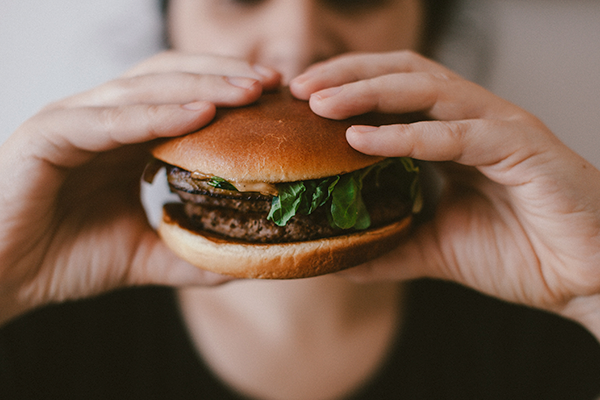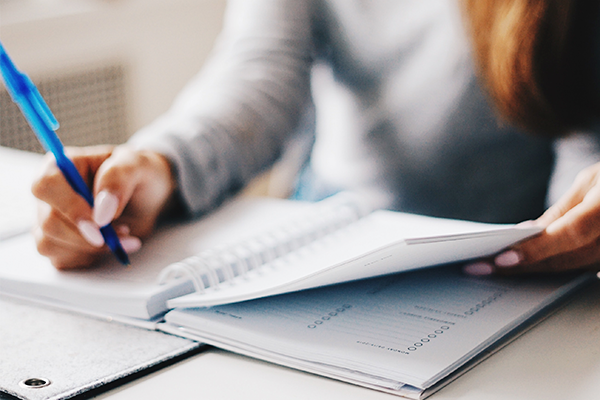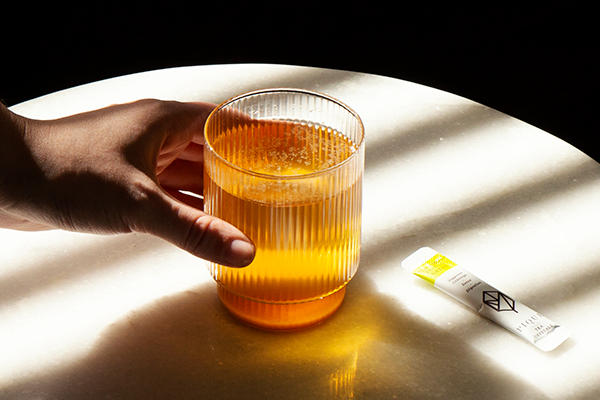Fasting is one of the simplest ways to get healthier and feel more energized and focused throughout the day.
And…. it’s not a fad diet! Quite the opposite – it’s something our ancestors have incorporated into their lives for most of history. (1)
The beautiful thing about fasting is that it’s something you can do anytime, anywhere, and it costs absolutely nothing. You don’t have to sign up to a program, restrict food groups, spend hours in the gym, or jump on board the latest trendy diet.
It doesn’t get any better than that.
However, to truly experience the benefits of fasting, it’s important to know which mistakes are commonly made and how you can avoid them.
Not only will these fasting mistakes slow down your results, but in some cases, they can make your health worse. Let’s make sure that doesn’t happen to you!
Top 5 Fasting Mistakes
1. Fasting Under Periods of Excessive Stress
While research suggests fasting can have a positive effect on some hormones, the keyword here is: some.
Fasting is linked to supporting healthy hormone balance – including the hunger hormone, ghrelin. (Note: this could be why you typically start feeling less hunger when you get used to fasting, despite not eating for extended periods of time.)
However, when it comes to stress hormones, fasting can actually negatively impact cortisol levels— your primary stress hormone. (2)
You see, going for an extended length of time without food basically signals to your body that you’re about to starve. Although you know that food is available whenever you decide to break your fast, your body doesn’t know that.
As a survival mechanism, the adrenal glands will release cortisol to activate the fight-or-flight response and protect you from any perceived threats.
All things considered, for someone who isn’t under extreme amounts of stress, this is not a cause for alarm or a reason to avoid fasting. In fact, short periods of acute stress can actually be good for you.
For example, short-term stress can support a healthy immune response and improve focus and concentration. (3) It’s ongoing stress that needs to be taken into consideration for fasting.
If you’re under a lot of physical, mental, or emotional stress, have symptoms of adrenal fatigue or unhealthy insulin levels, do not jump into a 24-72 hour fast.

Getting your hormones checked and working with a functional medicine doctor can give you a better picture of what’s best for you at this time.
What to Do Instead:
Start off slow, and gradually increase your fasting.
Depending on the current picture of your health, you might only be able to fast for shorter periods of time.
Intermittent fasting still provides the same benefits as longer periods of fasting, but with shorter fasting windows— such as 12, 14, and 16 hours. When you consider that you’re fasting for the entire time you’re asleep, this time frame is less extreme.
An intermittent fasting schedule can be easily tweaked to suit your needs. The key is to go slow.
With a little bit of trial and error, you can find the sweet spot between feeling great, supporting your hormones, and crushing your health goals all at once. Woo!
2. Eating Too Close to Bedtime
Do you ever notice when you eat one or two hours before bed (especially starchy meals) you wake up ravenously hungry the next morning?
This is due to the surge of insulin your body releases after you eat a meal, which is a natural part of the digestive process.
However, when you eat too close to bedtime, you can experience a drop in blood sugar levels as you sleep. This triggers the release of counter-regulatory hormones to help stimulate your appetite, so that you can get your blood sugar levels back up.
Either you’ll wake up in the middle of the night with hunger pangs, or you’ll be starvation central the next morning— which will make it difficult to stay fasted until your next feeding window.
Plus, you want your body to be repairing and regenerating as you sleep (not digesting food).

What to Do Instead:
Shift your eating window around so that you can have your last meal at least three hours before bed.
If that’s simply not possible, just be sure to avoid starches with your dinner and go for healthy fats instead (ie: an avocado sprinkled with sea salt, handful of nuts, or piece of salmon).
3. Eating Whatever You Want During Feeding Time
There’s a little myth that says you can eat whatever you want during intermittent fasting. That it’s not what you eat, but when you eat that’s important. This is simply not true.
First, since you’re eating during a condensed period of time, you need to be strategic about getting as many nutrients on your plate as possible from whole, unprocessed foods. Eat plant foods in abundance!
Second, although you may be reducing the amount of calories you eat in a day by eating fewer meals, turning to processed foods – like pizza, fries, donuts, or ice cream – can undo all your hard work.
Not only are these foods just empty calories, but they can leave you feeling burnt out, foggy, and even hungrier a few hours later. You’ll be far less likely to stick with fasting when you feel this way.
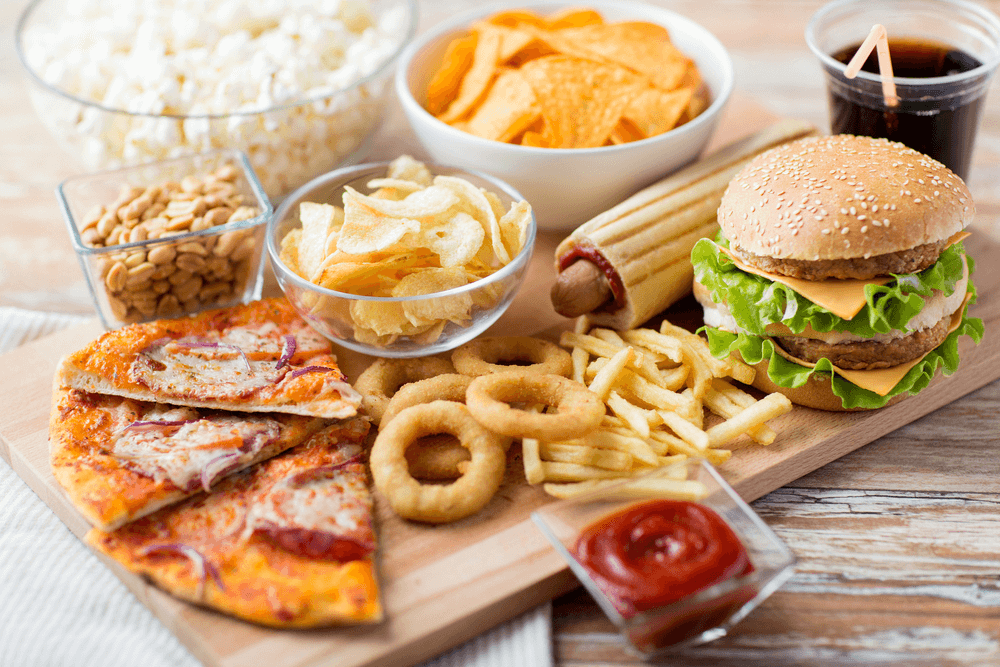
This doesn’t mean there’s no room for that slice of birthday cake or ice cream cone on the weekends. But these should be the exception, not the rule. The 80/20 rule is a good guideline here: 80 percent of the time eat whole, unprocessed foods. The other 20 percent offers room for flexibility.
What to Do Instead:
- Load up on avocado, raw cacao, wild fish, nuts, seeds, chia seeds, olives, and extra virgin olive oil. Healthy fats help you feel satiated.
- Try your best to “detox” your kitchen cupboards from all junk food before you fast.
- Prioritize stocking nutritious meals in your fridge at the beginning of each week. If the junk food isn’t there, the temptation won’t be either.
Planning ahead can make all of the difference in your fasting results— especially energy, lean muscle mass, sleep quality, and weight maintenance. - As a rule of thumb, always aim to fill half of your plate with non-starchy vegetables.
4. Jumping Into a Fast When You Eat a Standard American Diet (SAD)
While we’re on the topic, it’s not a good idea to jump into fasting if you’ve been eating a diet rich in refined sugar, carbohydrates, fried foods, alcohol, red meat, dairy, and unhealthy fats.
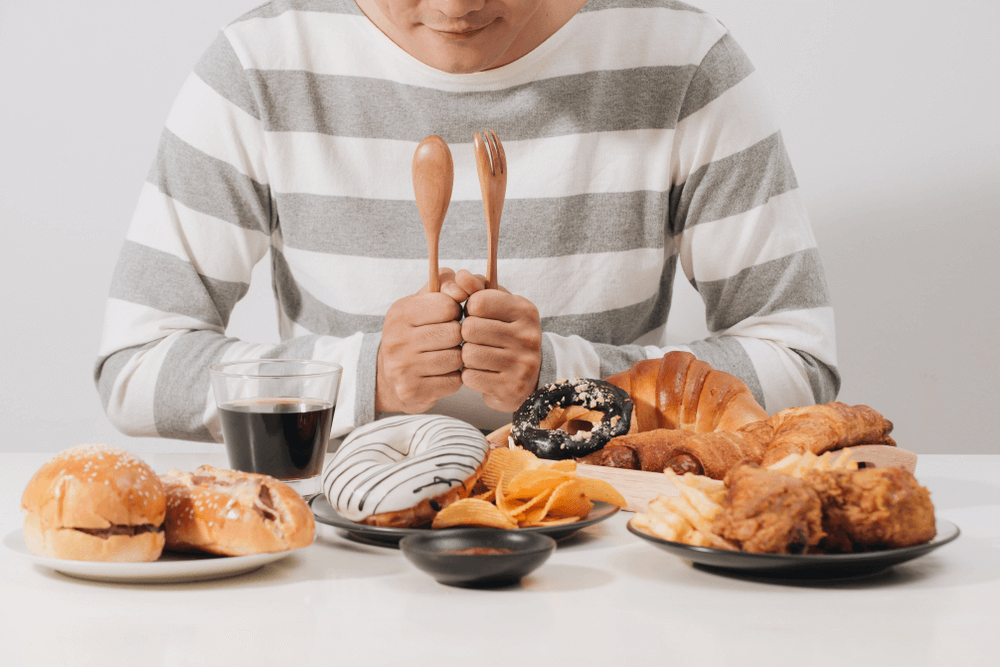
Sure, you may be anxious to get started, but fasting before cleaning up your diet is risky.
Not only are you more likely to experience intense hunger signals and energy crashes, but you may also experience stronger withdrawal symptoms like headaches, difficulty concentrating, sugar cravings, mood swings— and just feeling plain awful.
What to Do Instead:
To make fasting as easy and enjoyable as possible in the future, you can start right now by incorporating the fundamentals of a healthy diet.
Here’s how:
- Find a few healthy plant-based recipes online that are easy to make at home.
- Do your grocery shopping at the beginning of the week, plan meals ahead of time.
- Replace soda with herbal tea or lemon water. If you’re used to eating out every day, pick three days a week to bring a lunch from home.
5. Mixed Signals: Confusing Thirst for Hunger
Don’t be upset with your body, it’s not playing games on purpose. Mixed signals for hunger and thirst can happen because they’re interpreted in the same part of your brain.
If you feel hungry on fasting days— especially when you’re only a few hours into your fast— there’s a good chance you just need more fluids.
Your body will have ample energy to burn from fat stores long after your last meal, so don’t be afraid of a little hunger.
If you’re new to fasting, you can expect an adjustment period where you feel hungry as you get used to eating less often. This is normal and will pass. Don’t give in to that cookie! Here’s what you can do instead.
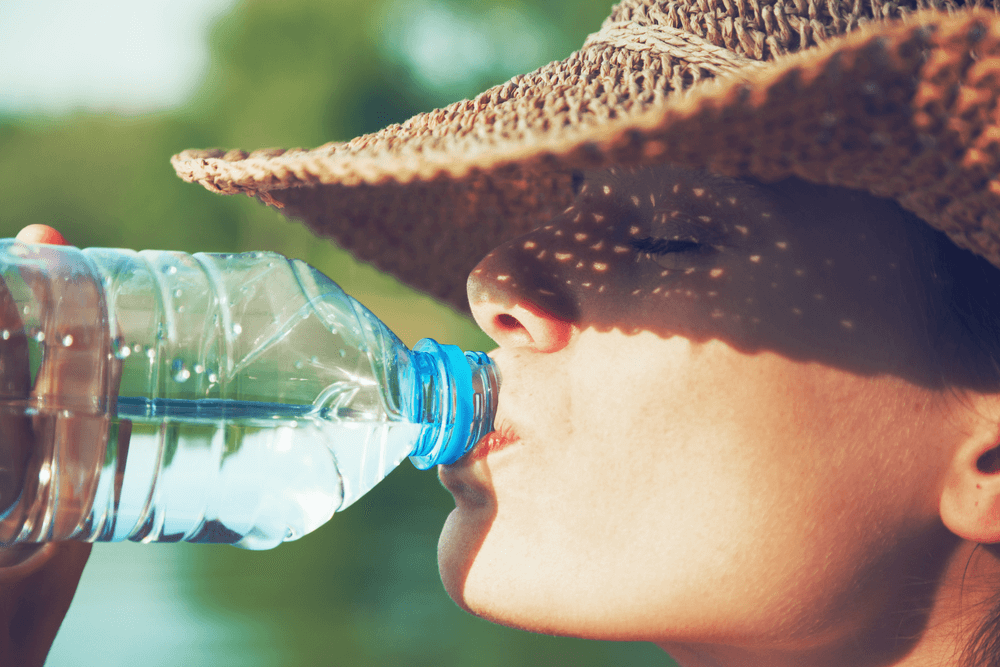
What to Do Instead:
- Drink a big glass of water and wait 30 minutes.
Most often, your hunger will dissipate with some good ol’ H2O, and you’ll feel more comfortable as you continue your fast.
- Drink green tea.
Hands down, tea is the best thing you can put in your body while you fast. Not only for staying hydrated, but for the powerful combination of polyphenols, caffeine, and catechins found in tea. Together, these nutrients have a synergistic effect, and are like a gold mine for fasting success.
They help support mental focus and increased satiety, while also providing energy without the jitters. In other words, green tea can really help level up your fast.
As an added bonus, green tea is rich in the amino acid L-theanine, which helps calm and relax the mind.
This can help you say goodbye to the mental hurdles that may arise, so that you can stay fasted comfortably for longer periods of time.
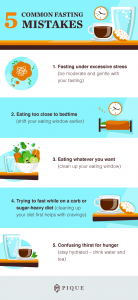
Final Thoughts
One of our favorite aspects of fasting is that it’s accessible to everyone. But we also know that it can be tricky! If you’ve decided to try it out, we don’t want you to give up before experiencing the many benefits it has to offer. So if you’ve tried and struggled, hopefully you can try some of the tips above and find success!
